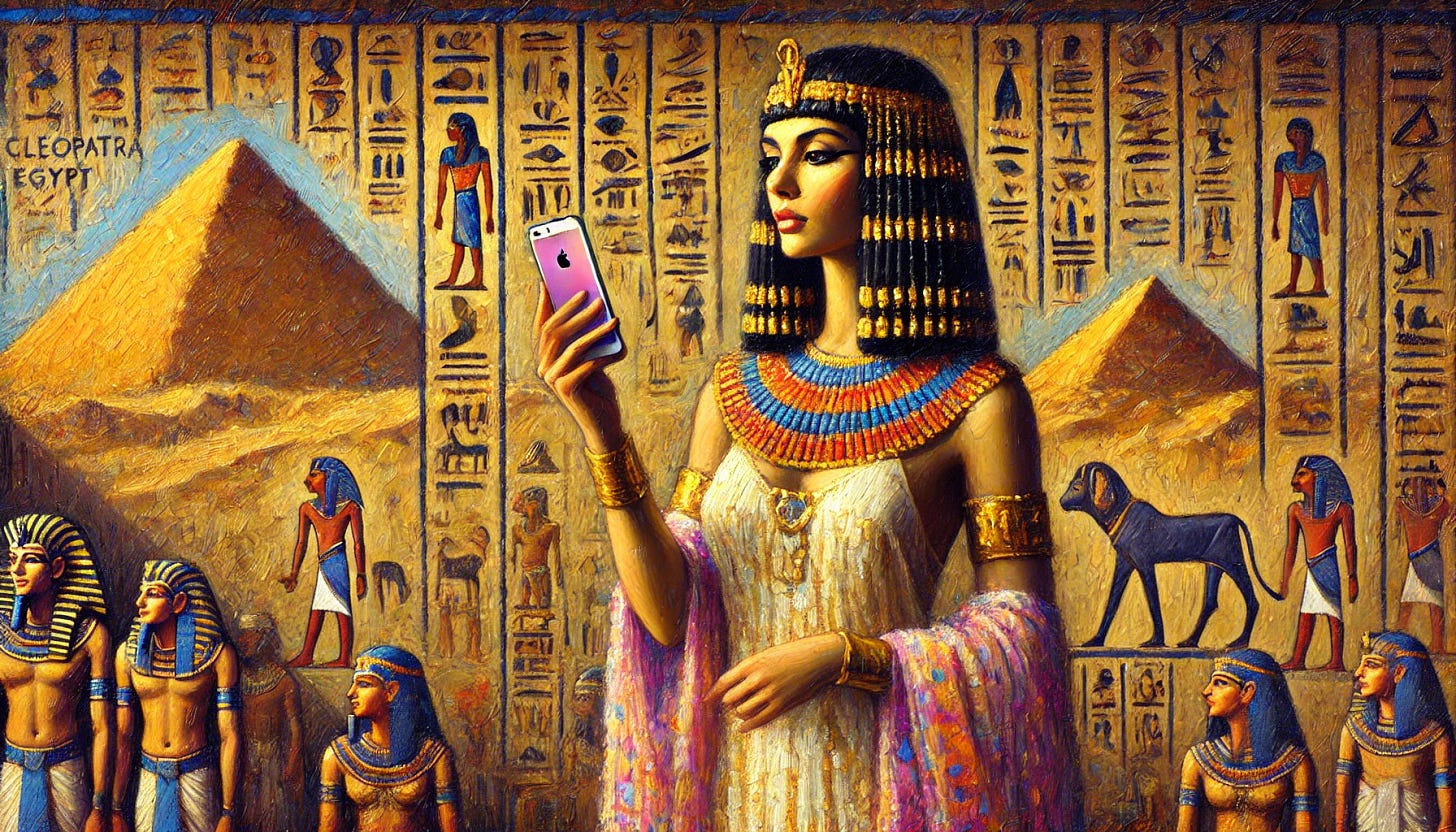Cleopatra Is Closer
You might already know that Cleopatra is actually closer in time to the release of the iPhone than to the building of the Great Pyramid in Egypt. This is an example I hear all the time, designed to show you that your perception of time is completely wack.
We tend to think about ancient Egypt as being…. well, ancient. It was a long time ago, so Cleopatra and the pyramids are kind of compartmentalized into the same category, but when we consider that more time passed between the pyramids and Cleopatra than between Cleopatra and today, we might be a little surprised.
Göbekli Tepe is another great example I hear a lot. Something like 5000 years ago, we humans figured out how to write things down so we could remember them later in some detail. Göbekli Tepe came to be almost 7000 years before writing.
How useful are these sorts of observations? I happen to think they’re very useful if you want to get a real picture of how events have unfolded, but to be honest with you, I just think these a…
Keep reading with a 7-day free trial
Subscribe to Goatfury Writes to keep reading this post and get 7 days of free access to the full post archives.


